For the third time in the last four editions of the Venice Biennale, after This Progress by Tino Sehgal in 2013 and Faust by Anne Imhoff in 2017, the Golden Lion has been awarded to a performance.
Sun & Sea (Marina) is the title of the choral and polyphonic piece staged by three creators – Rugilè Barzdziukaitè, Vaiva Grainylè and Lina Lapelyte – and curated by Lucia Pietroiusti, which is currently on view in one of the former warehouses of the Venice Navy Arsenale, which hosts the Lithuanian Pavilion.

The preference for transversal projects uniting music, dance, cinema and theatre, in order to create works that are both once-in-a-lifetime and spectacular, is becoming a constant feature of the judging procedure by the Jury in Venice, in line with a general tendency over the last decade which has rediscovered performance. This is a tendency which is, to a certain extent, nostalgic and partly originates from the opportunities offered by performance art to maintain contact with the uniqueness, unrepeatable and original qualities of a work – qualities that have been completely lost in most of the artistic production of the post-Benjamin period.
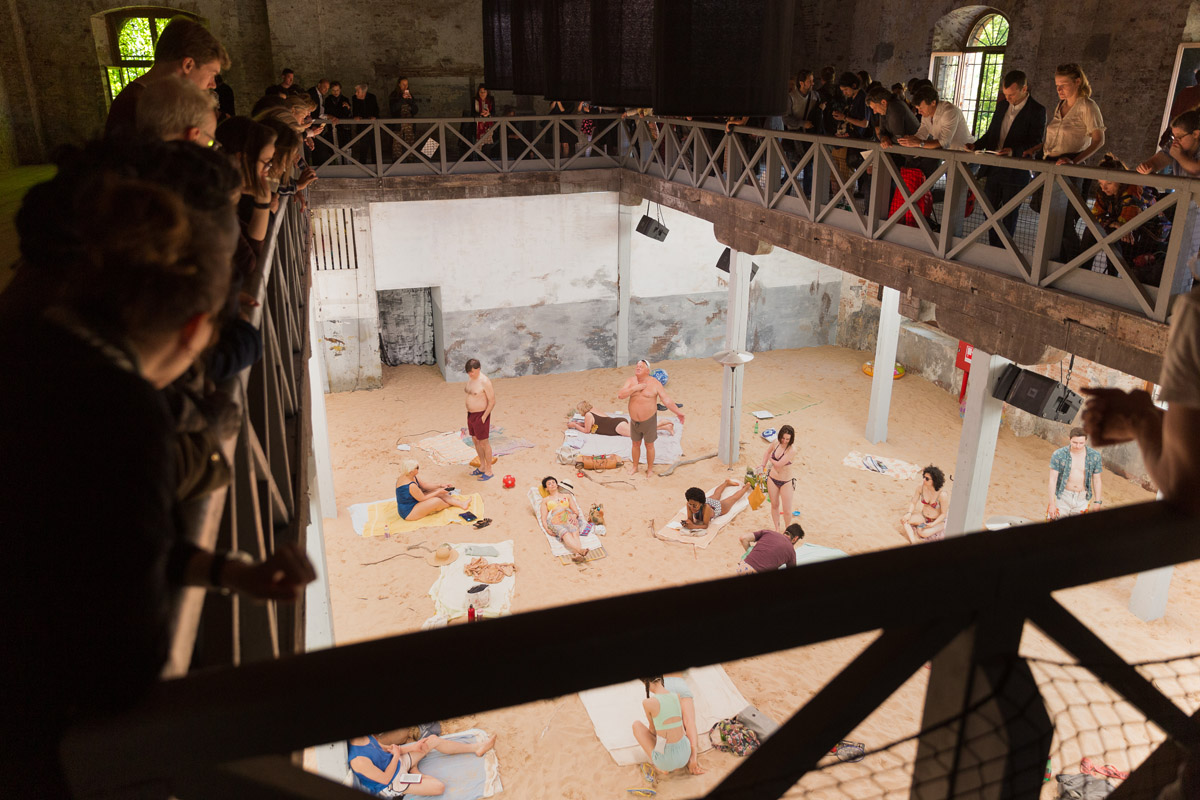
This time, however, compared to the more complex articulations of space found in the projects by Sehgal and Imhoff, the relationship between public and performance has been completely altered: this is partly a result of the architectural layout of the Pavilion, allowing the area where the action takes place to remain distinct from the platform above where the audience observes the performance. The piece proposes a traditional viewer-viewed relationship, typical of the two-dimensional character of painting. In fact, what the public is offered is a large genre scene; a scene in which all the characters sing in turn, leaving their “place in the sun”, the comfort zone that determines their “beached” condition.
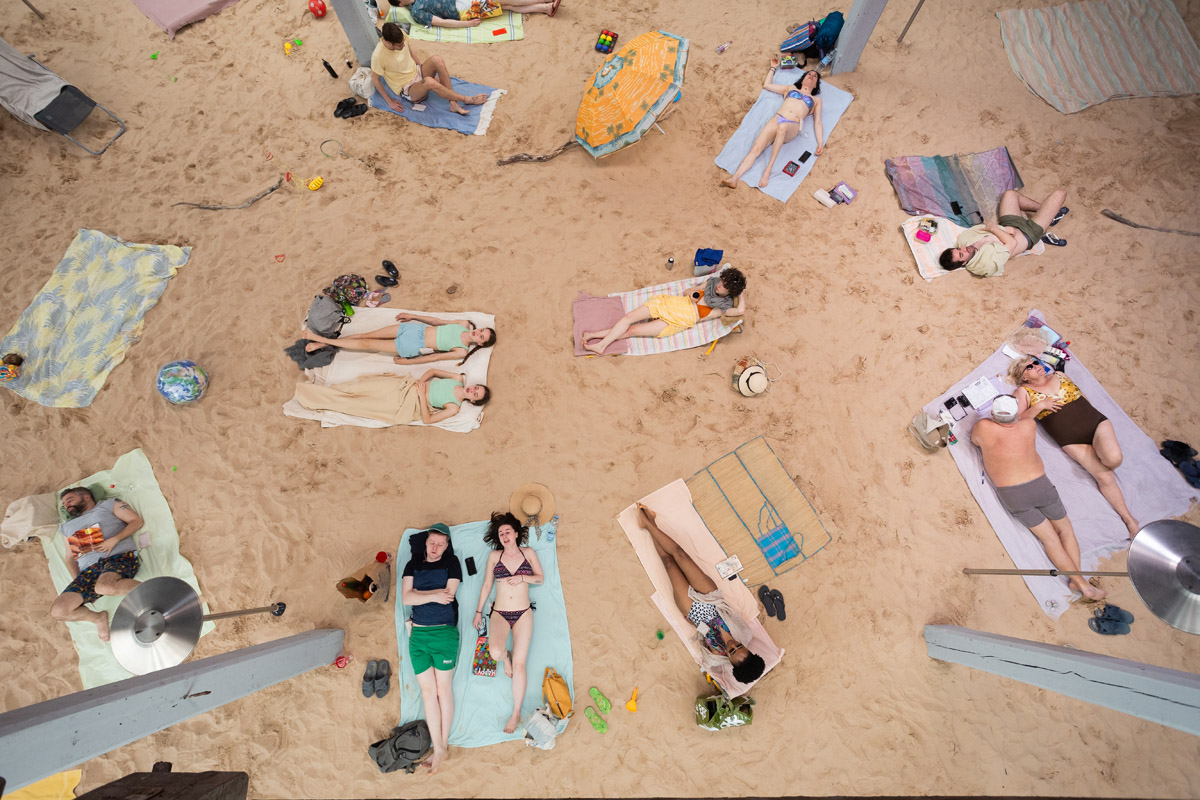
The artificial light, like internal daylight, confers a cinematographic HD-screen quality to the scene which allows us to briefly view an attempt to “trans-medialise” the performance, which draws from the language of musicals and videoclips. This is in contrast to the large-scale moving tableaux vivant present in a certain artistic cinema that, from Pasolini to Jarman, refers to great art – the fact that one of the three project creators is a filmmaker is no coincidence.
A sacred aura characterises the singing and the characters’ movements in this fresco of humanity, relaxed to the point of decadence; characters that present themselves, at first sight, as a group of hyperrealist sculptures by Duane Hanson, artworks that have so often populated the collective imaginary of past editions. The characters’ voices emerge from a background of organ music, narrating their banal concerns – how to avoid becoming sunburnt, how to plan their next holidays, etc. – which slowly become increasingly pertinent until they touch upon the distressing theme of the imminent environmental catastrophe and, here, reach their dramatic climax.
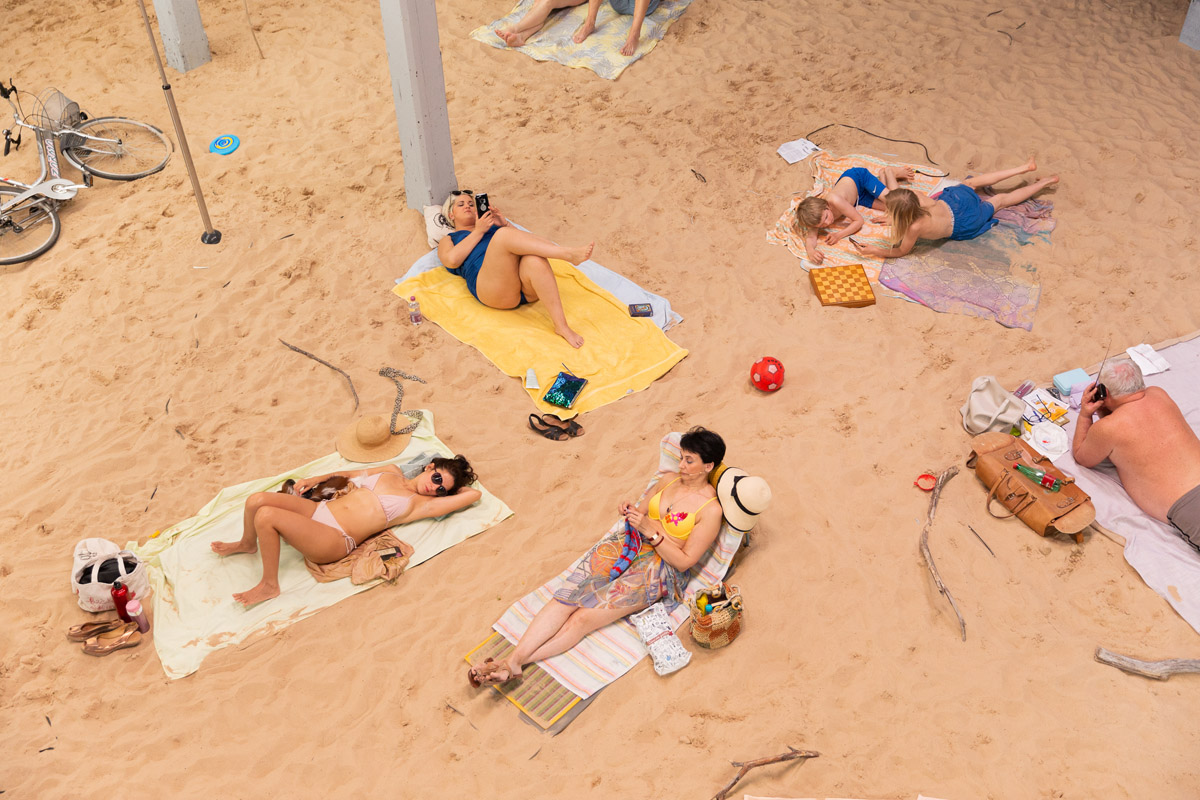
In a Brechtian manner, which was even mentioned in the official motivation for the prize, the introduction of an aulic element, opera, into the banality of everyday life, transforms reality into a sub-reality. The resulting perceptive shock confronts us with the urgency to escape the dangerous condition where thinking processes are “on holiday” – a condition which is, in some ways, the theme of this biennale and the wish that gives this event its title, May you live in interesting times.
Despite the plurality of themes and the linguistic inscriptions transforming this performance into an “extended” work, however, the overall project, as they say, is a winning one, but not entirely convincing.
In this excess of lyricism, tending towards the epic, the work never manages to overcome that anti-monumentality and anti-narrative that has always distinguished the performance from its old cousins, cinema and theatre. And, actually, compared with the aforementioned performative pieces that continuously explored a creative register – Seghal and Imhoff’s work is the outcome of a long and serious process that starts in rehearsals but then continues in the happening – the Lithuanian performance remains trapped in the representative register of a fictional drama, stimulating reflection on the urgent nature of several current themes, but without generating any vision that is really “interesting”.
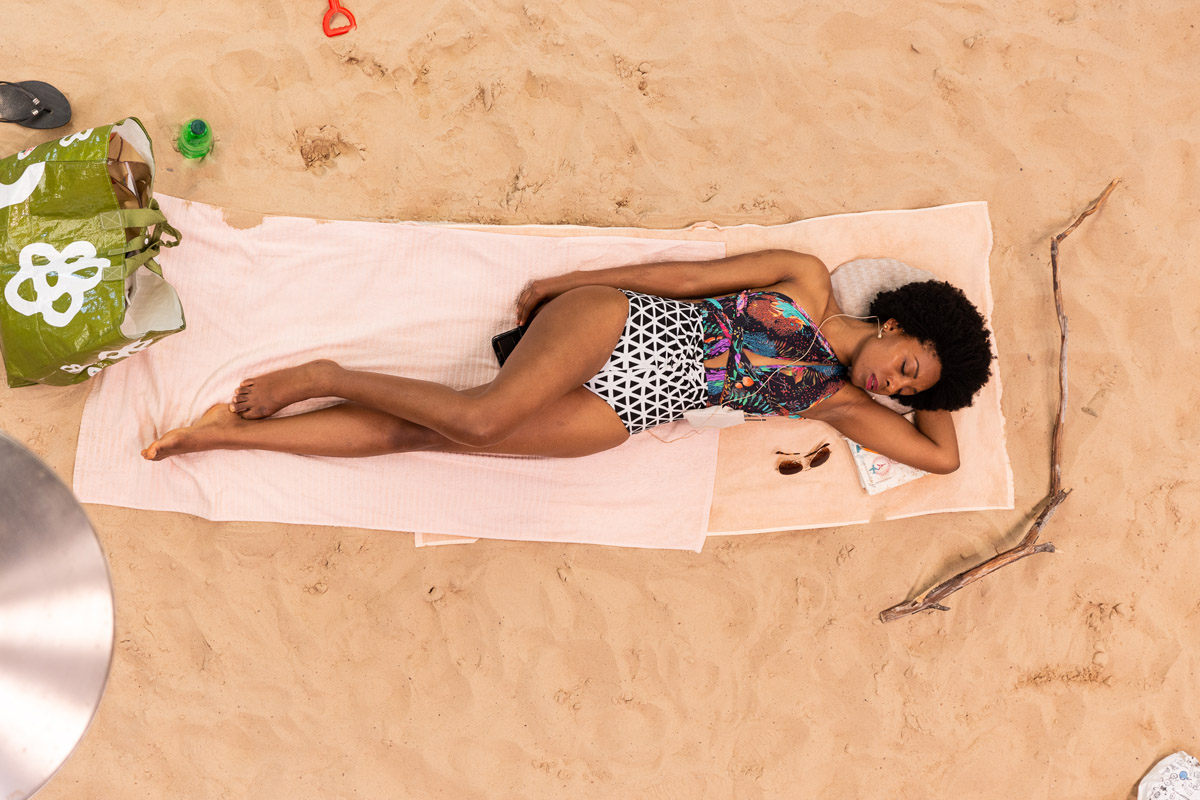
Perhaps this is exactly the point. What constitutes this “interest”, one so often evoked by Ralph Rugoff to the point that it has become the focus of the whole Biennale? We asked ourselves this question several times when visiting the national pavilions, searching for a formative tension towards something that is connected with the ability of art to generate visions, to act according to a logic that not only produces an intellectual response, but also a perceptive and emotional one; finding ourselves opposite a series of “interesting” debates, but still too moulded by the critical excess typical of a postmodern ideology which is now in decline.
Leaving aside the pressing actuality of the themes examined in the winning pavilion, there might be a reason to be found in the Biennale’s public, operating even before the Jury’s decision, because it was the public that decided this was the winning piece during the opening days, before the official award ceremony. A motivation which has to do with the value that can be attributed to the Lithuanian collective, shining a spotlight on the state of inertia and the fact that thinking processes are “on holiday”. This is what characterises a humanity increasingly confined to a situation resembling “genre painting”, forced to act according to fixed rules often dictated by the media and, therefore, to move within the confines defined by a screen.
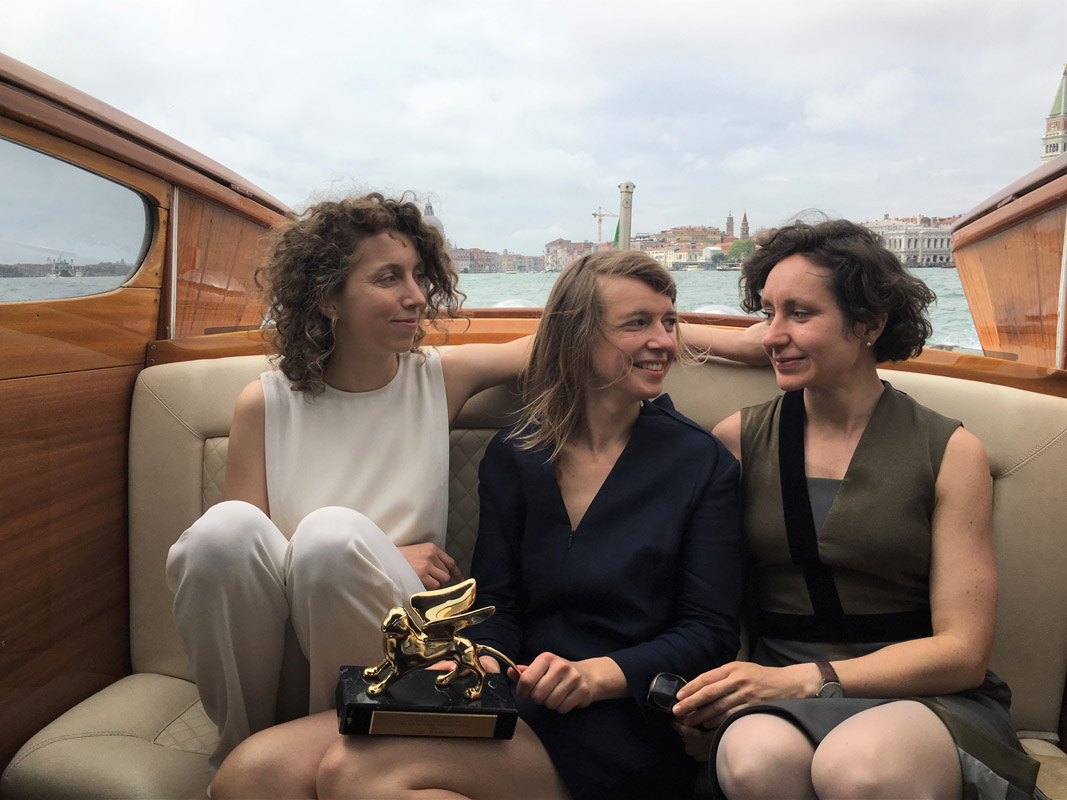
It is possible to exit this condition of confinement. This can be done through the performance medium that the Lithuanian artists have used, an instrument of re-action to this levelling of conscience. The beach, in this sense, represents a metaphor for the breakdown of differences linked to the socio-cultural context of belonging.
Expressing oneself through the body, in its infinite possibilities for action, means re-appropriating a creative process which, when new dialogue and reactions are activated – in a similar way to those staged in this avant-garde beach theatre – becomes the foundation of a new human ecology, even before an ecology of the environment.

It is not surprising, therefore, that this project, which is not striking in terms of originality, has produced such a unanimous interest in the context of a Biennale which tries to create order rather than generate disorder: the choice, for example, of presenting the same artists for the second time in the two main spaces of the Gardens and the Arsenale; of including in the exhibition more women than men rather than presenting work only by living artists; of organising the setting in a regular way without giving way to the sometimes spectacular, over-the-top and random set ups. All these are manifestations of a precise curatorial choice which knowingly works towards this end.
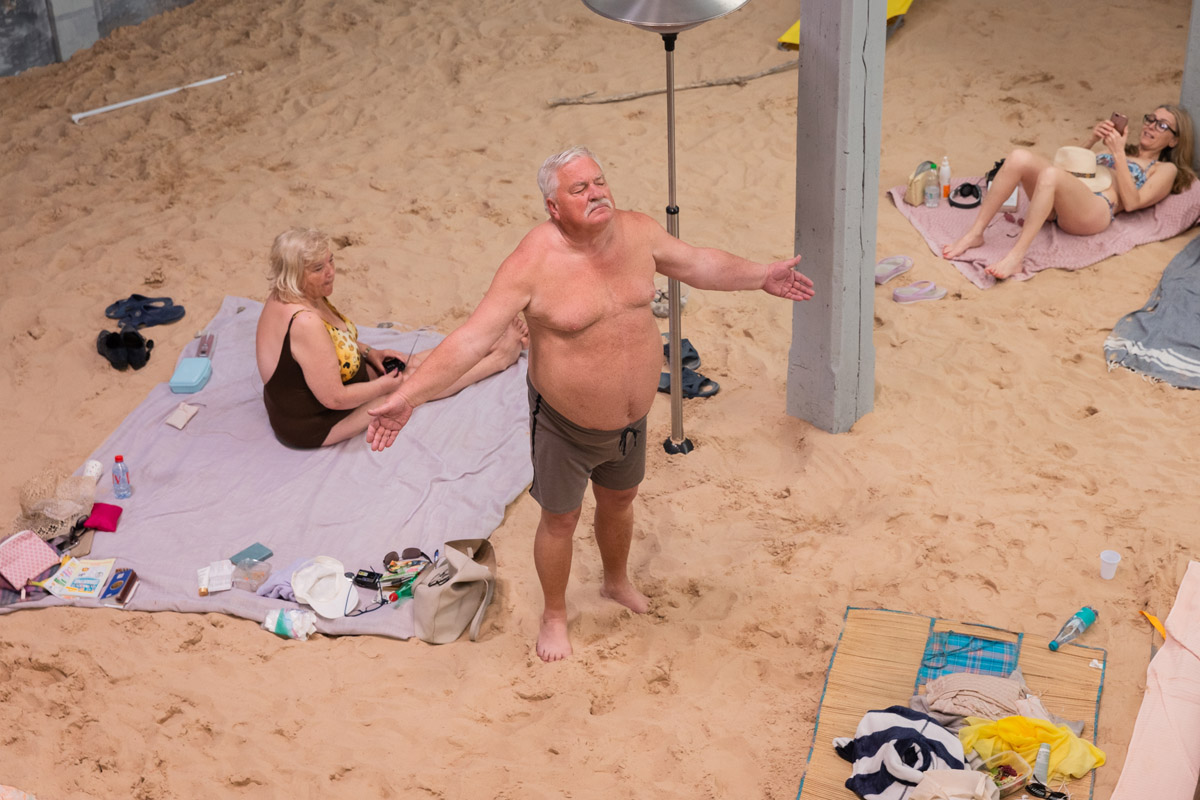
We just have to take note of this direction, conscious that it is the polyphony of ideas that fascinates, engages and moves the public – and it is here that the true sense of the work resides – beyond the spectacularisation of a narration that, in this case, appears to exceed common sense. And it is at this point that the Lithuanian performance becomes the clearest example of what can be generally seen at this Biennale: on the one hand, it debates important current themes (from postcolonialism to the environmental crisis and gender discrimination) with superficiality and, often, an ahistorical perspective; on the other hand, it takes credit for bringing these themes to the fore, positioning them at the centre of a space that is set up everywhere as if it were a theatrical stage, as if these were centres of “interest” on which, warns the curator, it is necessary to keep the focus of art alive.
Lituanian Pavillon, curated by Lucia Pietroiusti, Magazzino n. 42, Marina Militare, Arsenale di Venezia, Fondamenta Case Nuove 2738/C (near Campo de la Celestia), Biennale di Venezia 2019, 11.05 – 31.10.2019
images (all): Rugile Barzdziukaite, Vaiva Grainyte, Lina Lapelyte, «Sun_Sea (Marina)», opera-performance at Biennale Arte 2019, Lithuanian Pavillon, Venice © Andrej Vasilenko









































